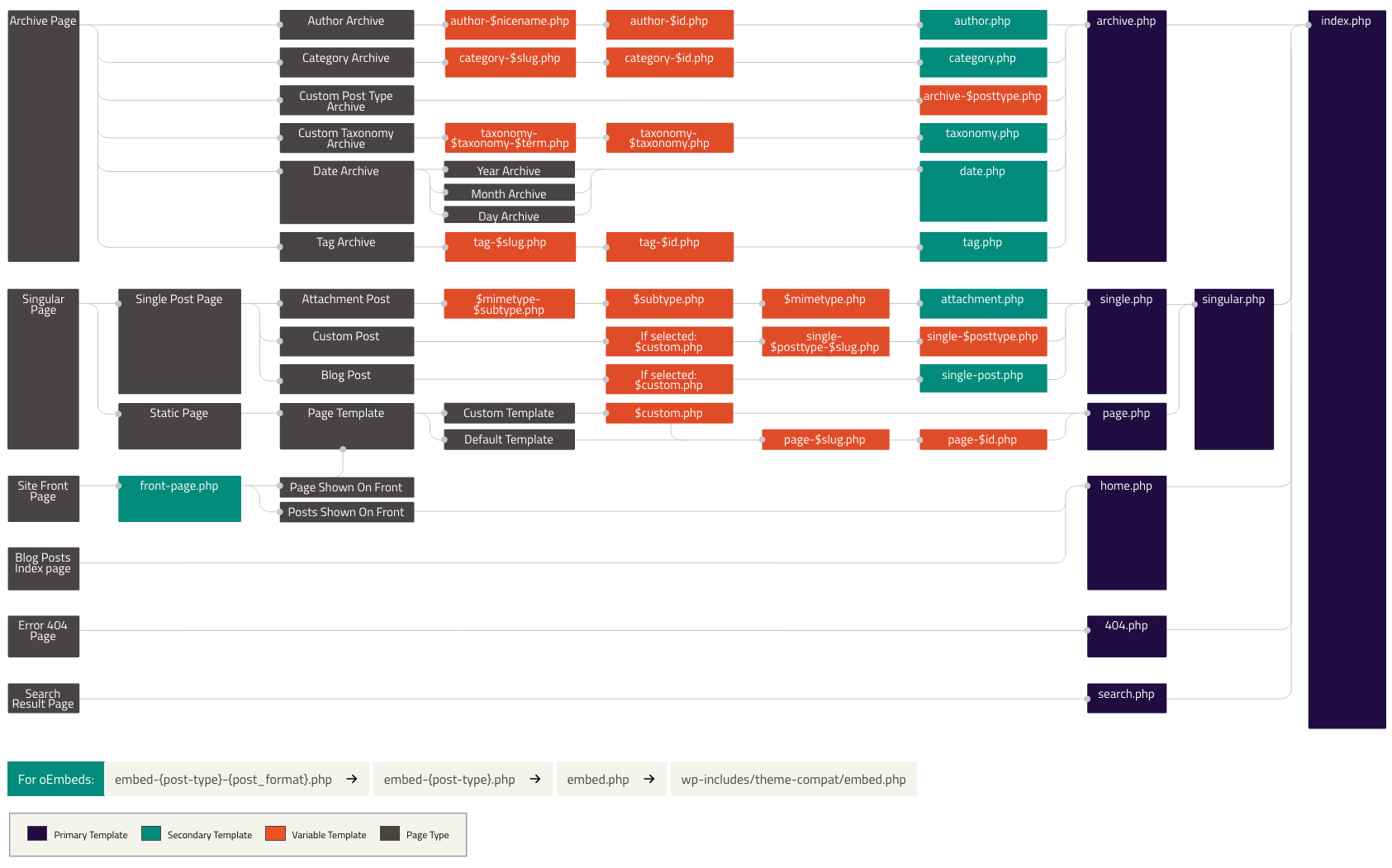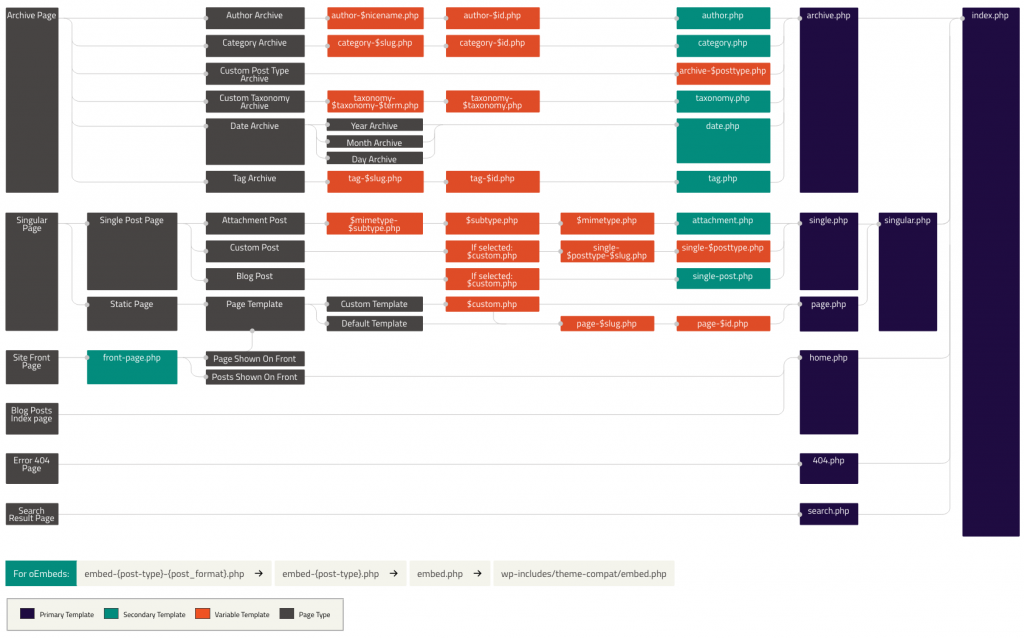Template Hierarchy
Postado 2022-11-18 04:47:47
1
2K

Overview
WordPress uses the query string to decide which template or set of templates should be used to display the page. The query string is information that is contained in the link to each part of your website.
Put simply, WordPress searches down through the template hierarchy until it finds a matching template file. To determine which template file to use, WordPress:
- Matches every query string to a query type to decide which page is being requested (for example, a search page, a category page, etc);
- Selects the template in the order determined by the template hierarchy;
- Looks for template files with specific names in the current theme’s directory and uses the first matching template file as specified by the hierarchy
Examples
If your blog is at http://example.com/blog/ and a visitor clicks on a link to a category page such as http://example.com/blog/category/your-cat/, WordPress looks for a template file in the current theme’s directory that matches the category’s ID to generate the correct page. More specifically, WordPress follows this procedure:
- Looks for a template file in the current theme’s directory that matches the category’s slug. If the category slug is “unicorns,” then WordPress looks for a template file named
category-unicorns.php. - If
category-unicorns.phpis missing and the category’s ID is 4, WordPress looks for a template file namedcategory-4.php. - If
category-4.phpis missing, WordPress will look for a generic category template file,category.php. - If
category.phpdoes not exist, WordPress will look for a generic archive template,archive.php. - If
archive.phpis also missing, WordPress will fall back to the main theme template file,index.php.
Visual Overview


Pesquisar
Categorias
- Art
- Causes
- Best Offers
- Crafts
- Dance
- Drinks
- Film
- Fitness
- Food
- Jogos
- Festival
- Gardening
- Health
- Início
- Literature
- Music
- Networking
- Outro
- Party
- Religion
- Shopping
- Sports
- Theater
- Wellness
Leia Mais
Climate Activist Greta Thunberg releasing ‘The Climate Book’
Swedish environmental activist Greta Thunberg, challenging world leaders to require immediate...
Revolucione a Personalização Industrial com o Marcador Laser
O mundo da indústria e da fabricação está passando por uma...
GoodWe-Produkte für effiziente Solarenergie und Stromspeicherung
Die Energiewende ist längst nicht mehr nur ein Trend, sondern eine Notwendigkeit. Immer mehr...
Desert Sky Payments
Introduction:
In the vast expanse of financial services, navigating the shifting sands of...
Tim Hortons Promotions: Ofertas para Disfrutar en México
¡Hola, amantes del café y las donas! ¿Buscas una forma divertida y...
© 2026 Whatson Plus
 Portuguese
Portuguese




